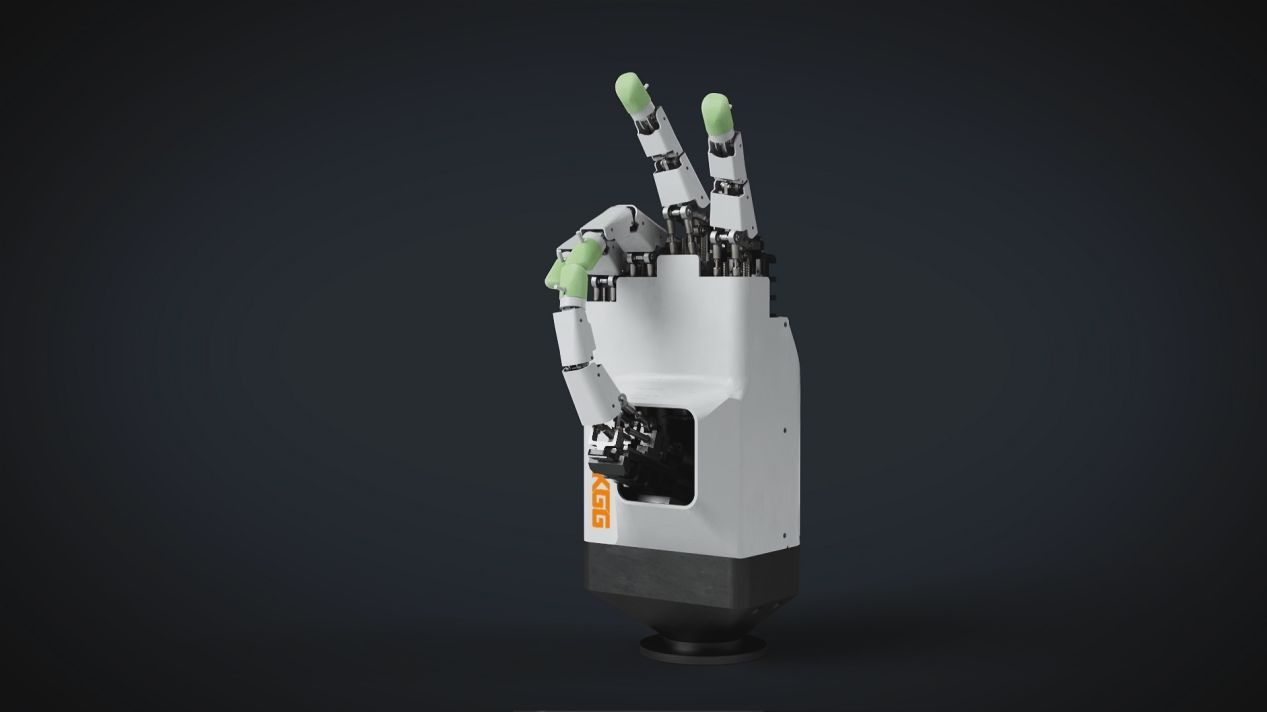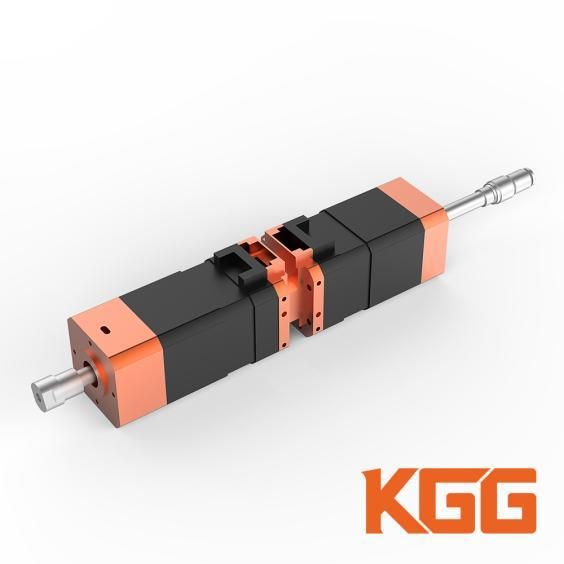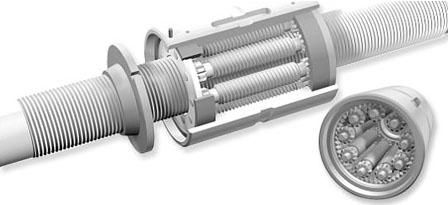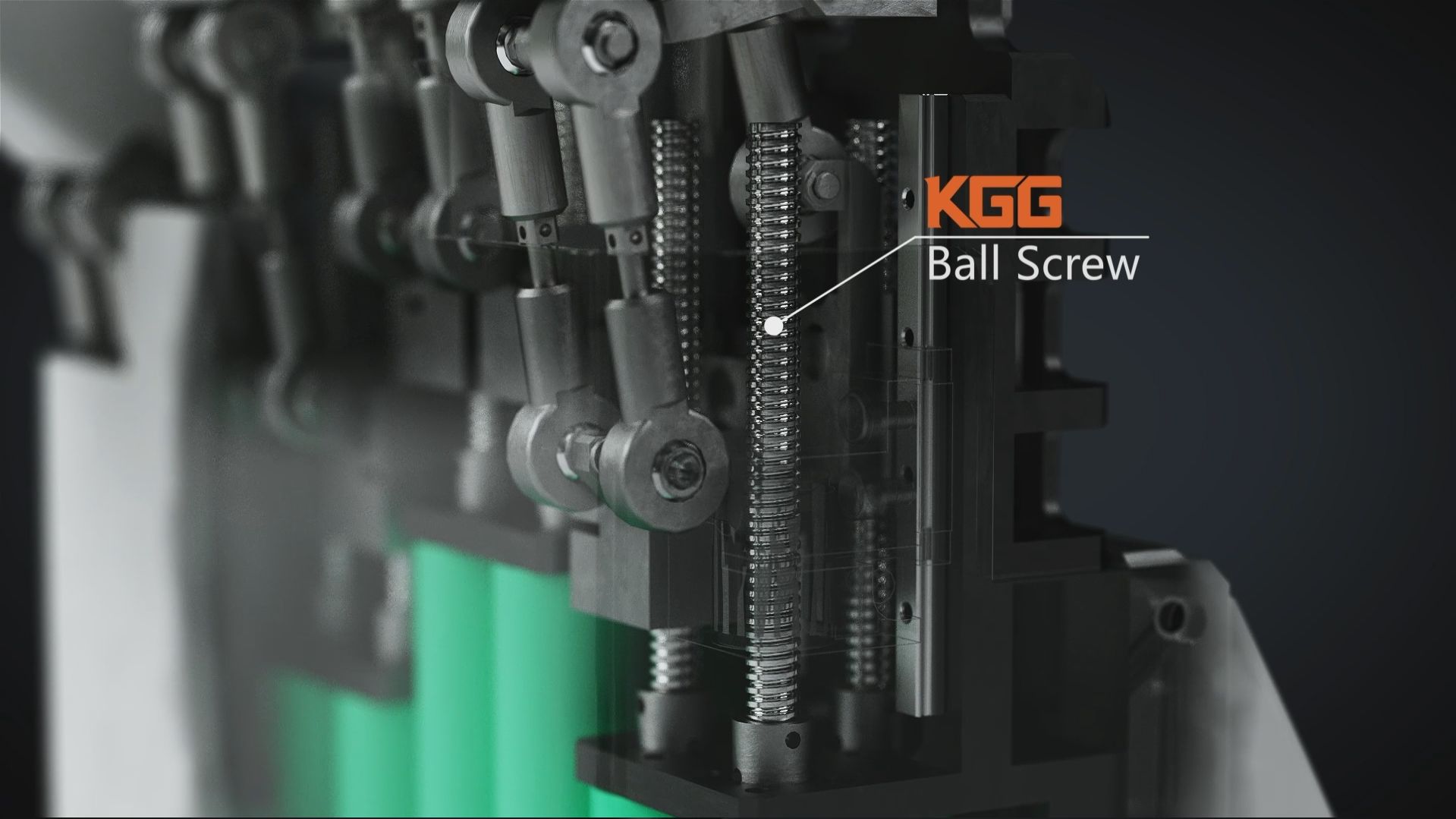A robot typically consists of four parts: an actuator, a drive system, a control system, and a sensing system. The robot’s actuator is the entity on which the robot relies to perform its task, and is usually composed of a series of links, joints, or other forms of motion. Industrial robots are divided into four types of arm movements: right-angle coordinate arms can move along three right-angle coordinates; cylindrical coordinate arms can lift, turn, and telescope; spherical coordinate arms can rotate, pitch, and telescope; and articulated arms have multiple rotating joints. All these movements require actuators.
KGG Self Developed Manipulator
Actuators can be divided into two categories based on motion: rotary actuators and linear actuators.
1) Rotary actuators will rotate something by a certain angle, which can be finite or infinite. A typical example of a rotary actuator is an electric motor, which is an actuator that converts an electrical signal into a rotational motion of its shaft, and rotates the motor when current is applied to the basic motor. Connecting the motor directly to the load creates a direct-drive rotary actuator, and many rotary actuators are combined with a mechanism used as a mechanical lever (advantage) to reduce the speed of rotation and increase the torque, if the end result is rotation, the output of the assembly is still a rotary actuator.
KGG Precision ZR Axis Actuator
2) Rotary actuators are also connected to a mechanism that converts rotary motion into a back and forth motion, which is called a linear actuator. Linear actuators essentially move the object in a straight line, usually back and forth. These mechanisms include: ball/roller screws, belts and pulleys, rack and pinion. Ball screws and roller screws are typically used to convert rotary motion into precise linear motion, such as on machining centers. Racks and pinions typically increase torque and reduce the speed of rotary motion, and they can also be used in conjunction with mechanisms that convert rotary motion into linear motion.
Rotary actuators mainly include RV reducers and harmonic reducers:
(1) RV reducer: RV is usually used with cycloid, used for large torque robot joints, mainly for 20 kg to several hundred kilograms of load robot, one, two, three axes are used RV.
(2) Harmonic reducer: Harmonic used to be mainly involute tooth shape, but now some manufacturers use double arc tooth shape. Harmonics can be loaded with small torque, usually used for robotic arms under 20 kg. One of the key gears in harmonics is flexible and requires repeated high-speed deformation, so it is more fragile and has less load capacity and life than RV.
In summary, the actuator is a key component of the robot and has a significant impact on the load and accuracy of the robot. Reducer It is a reduction drive that can increase the torque by reducing the speed to transmit a larger load and overcome the defect that the servo motor outputs a smaller torque.
Post time: Jul-07-2023










